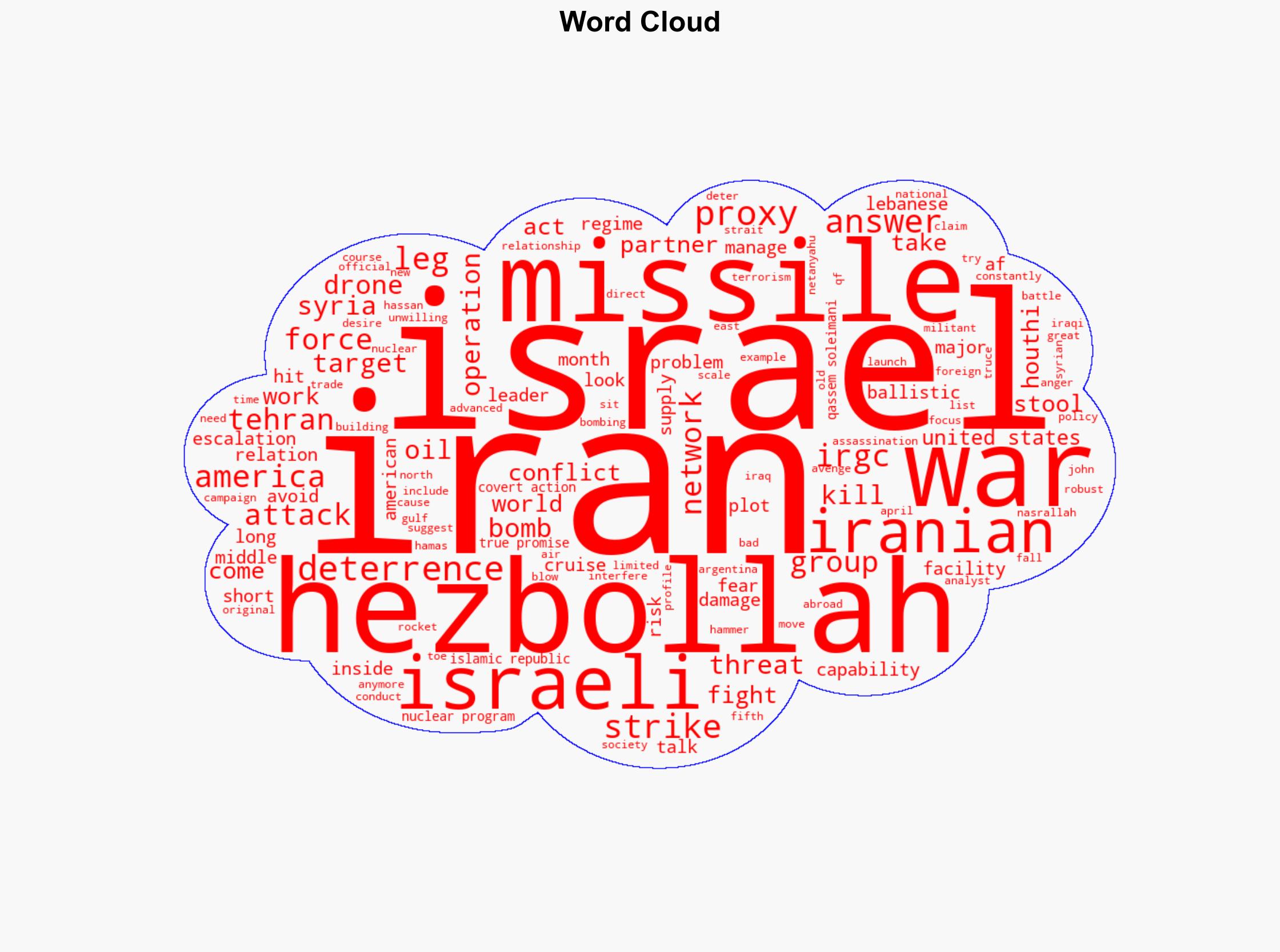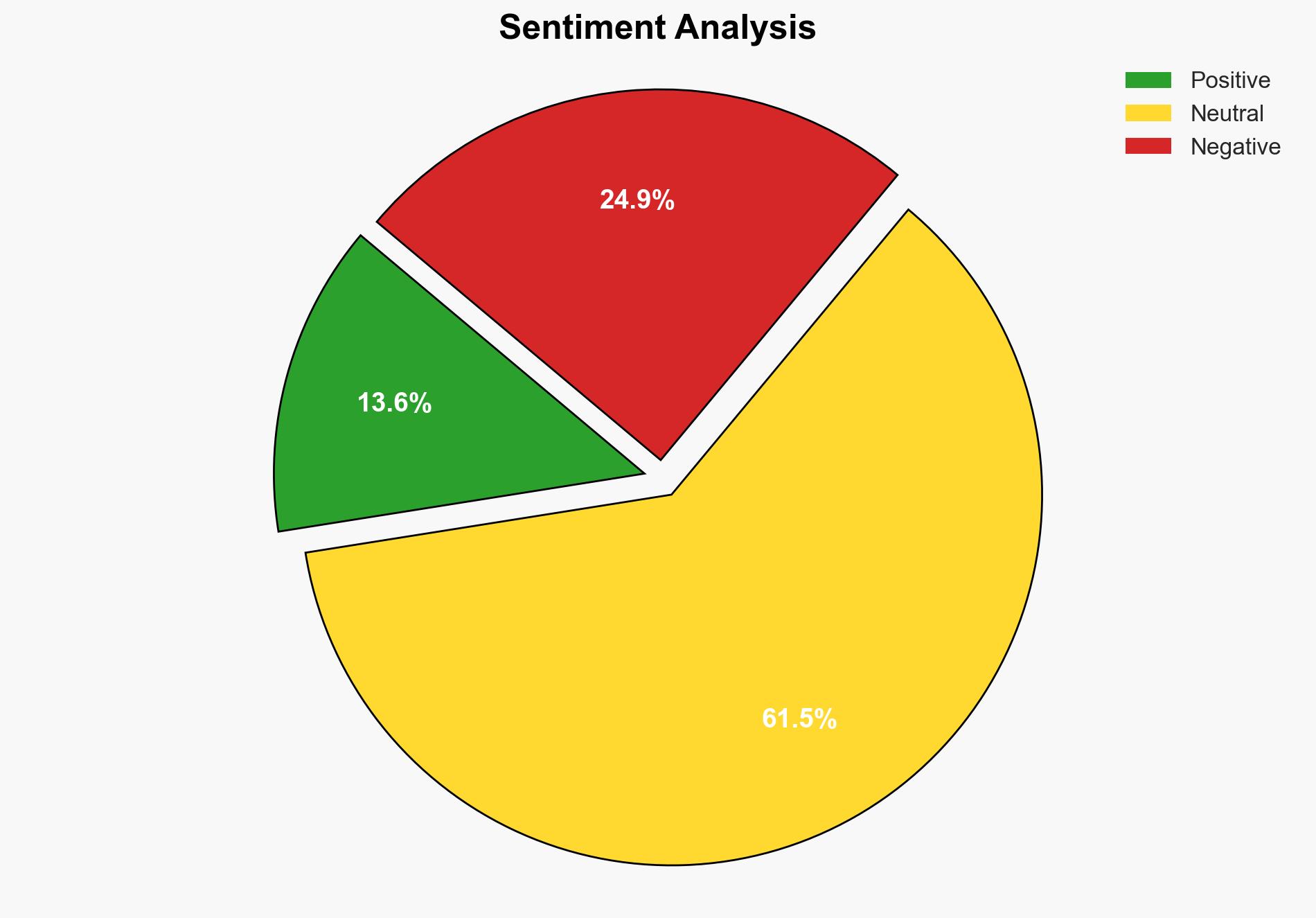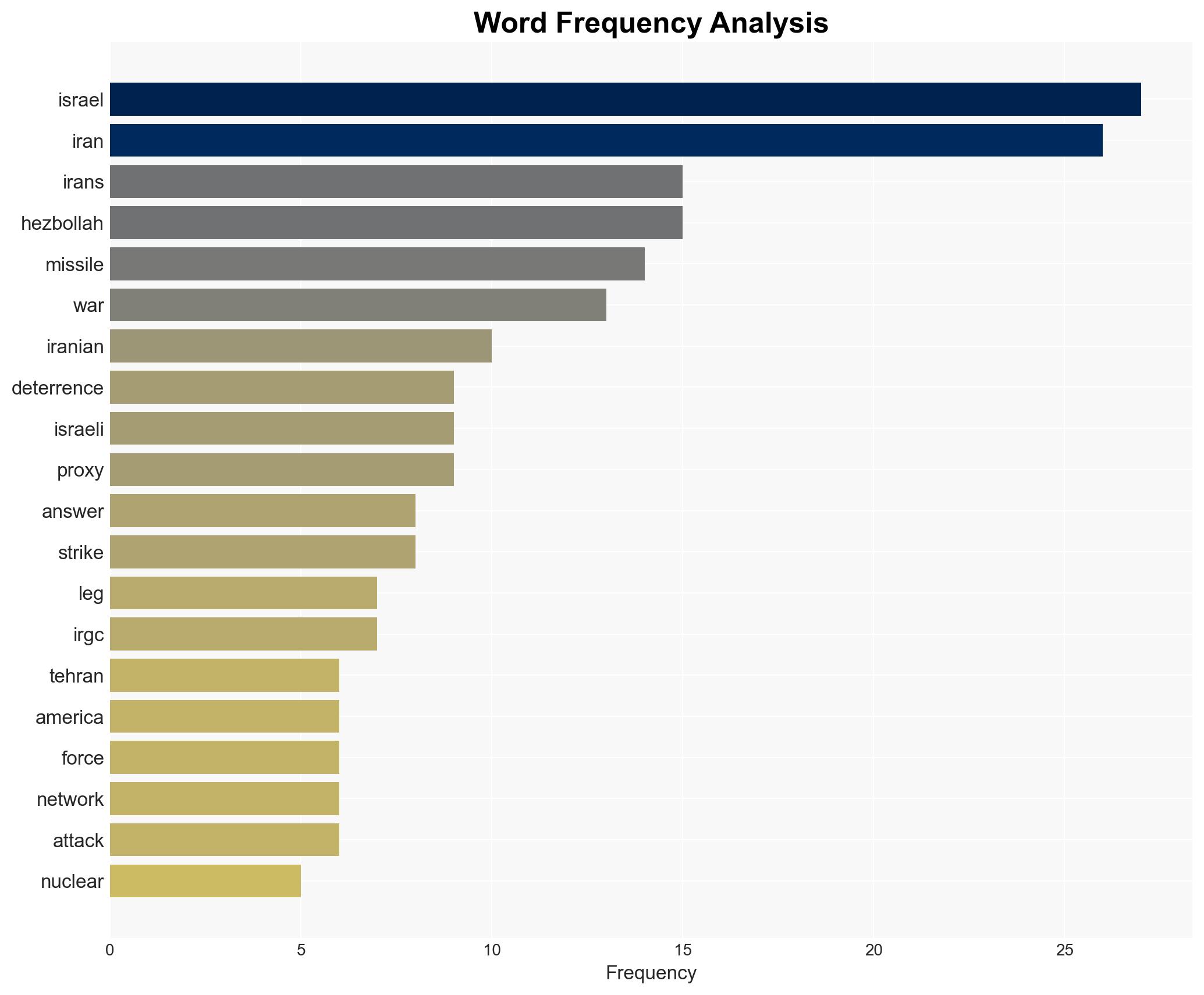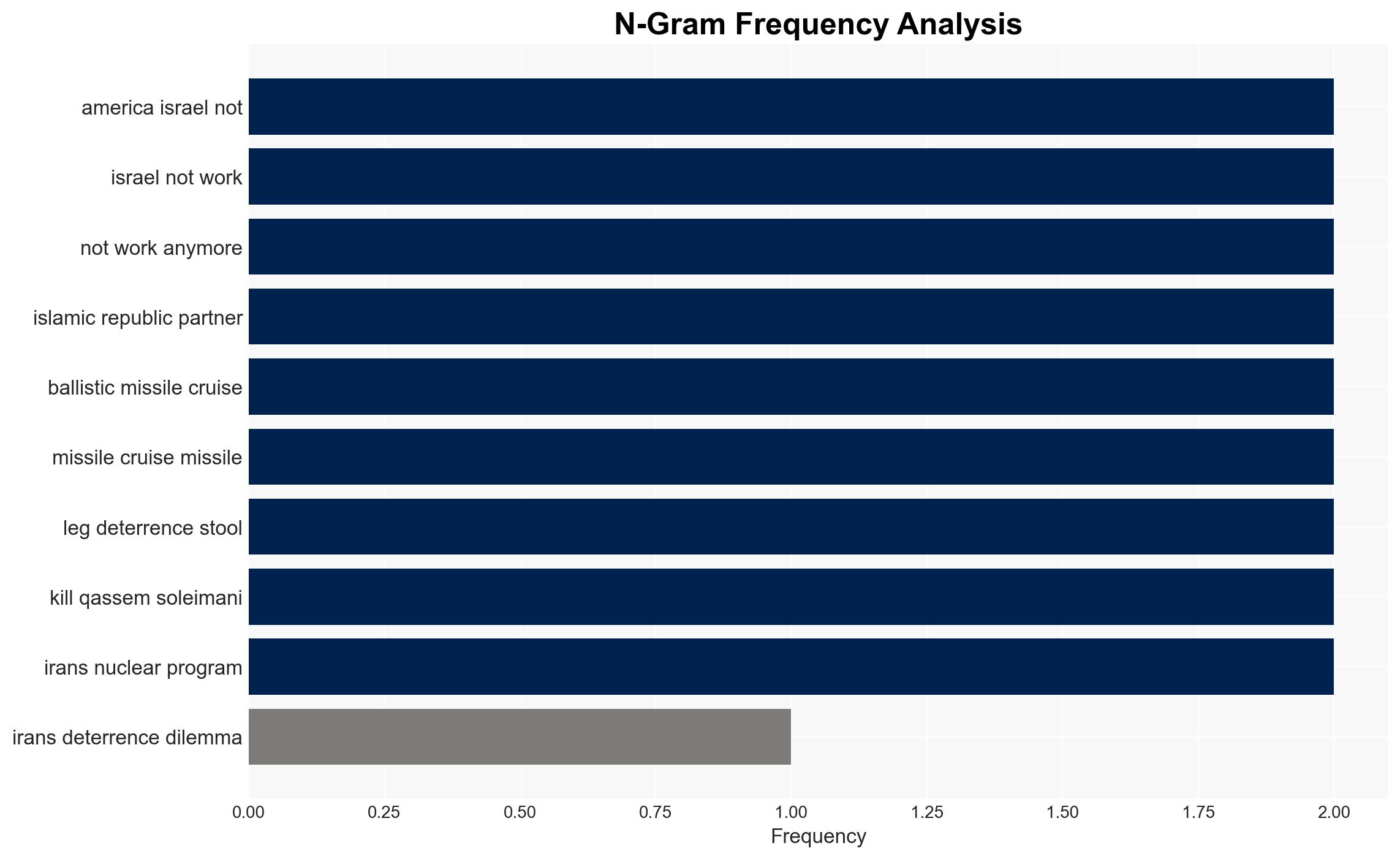Irans Deterrence Dilemma – The National Interest
Published on: 2025-04-11
Intelligence Report: Irans Deterrence Dilemma – The National Interest
1. BLUF (Bottom Line Up Front)
Iran’s traditional deterrence strategies against Israel and the United States are increasingly ineffective. The nation faces a critical decision: pursue nuclear capabilities or remain vulnerable to external pressures. This report analyzes Iran’s current deterrence framework and offers strategic recommendations for stakeholders.
2. Detailed Analysis
The following structured analytic techniques have been applied for this analysis:
General Analysis
Iran’s deterrence strategy historically relied on four key components: missile capabilities, proxy networks, terrorism, and control over oil routes. However, recent developments indicate these measures are insufficient against Israeli and American actions. Notably, Israel’s military and covert operations continue unimpeded, challenging Iran’s ability to respond effectively.
The missile arsenal, while extensive, has not deterred Israeli strikes. Proxy groups, including Hezbollah, maintain a significant presence but have not escalated to full-scale conflict, suggesting a mutual deterrence with Israel. Terrorism and covert actions pose a threat but have not altered the strategic balance. Control over the Strait of Hormuz remains a critical leverage point, yet its effectiveness is limited by global energy market dynamics.
3. Implications and Strategic Risks
The failure of Iran’s deterrence strategy poses significant risks to regional stability and global economic interests. A potential Iranian dash for nuclear weapons could trigger a regional arms race, increasing tensions and instability. The inability to deter Israeli actions may embolden further military and covert operations, risking broader conflict.
Economically, disruptions in the Strait of Hormuz could impact global oil and gas supplies, affecting energy prices and economic stability worldwide. National security concerns are heightened by the potential for increased terrorist activities targeting Israeli and Western interests.
4. Recommendations and Outlook
Recommendations:
- Enhance diplomatic efforts to de-escalate tensions and prevent a nuclear arms race in the region.
- Strengthen intelligence and counter-terrorism operations to mitigate threats from proxy groups and covert actions.
- Encourage regional cooperation to ensure the security of critical maritime routes, particularly the Strait of Hormuz.
Outlook:
Best-case scenario: Diplomatic negotiations lead to a de-escalation of tensions, with Iran agreeing to limit its nuclear ambitions in exchange for economic incentives.
Worst-case scenario: Iran pursues nuclear capabilities, prompting preemptive strikes by Israel and escalating into a broader regional conflict.
Most likely scenario: Continued low-level conflict and proxy engagements, with periodic escalations but no full-scale war.
5. Key Individuals and Entities
The report references significant individuals such as Qassem Soleimani and Hassan Nasrallah. Key entities include the Islamic Revolutionary Guards Corps and Hezbollah. These individuals and organizations play pivotal roles in Iran’s deterrence strategy and regional dynamics.





